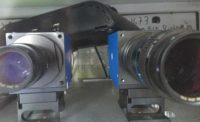Driving faster than the posted limit in a highway work zone, no one enjoys the sting of a speeding ticket for $250 or higher—as it would be in, for example, Illinois—especially if you are caught on camera and not by a cop. All together, 12 states have radar-camera speed-limit enforcement in at least one location, seven states allow its limited use, and 13 states prohibit it. What’s clear from research is that such systems are a proven tactic to help reduce speeding and save lives.
As recently as 15 years ago, 1,026 people died in road work-zone crashes in the U.S. each year. In 2014, that number was down to 669, according to WorkZoneSafety.org. But who believes the job is done at 669 deaths? Some of the tens of thousands of people who have received a work-zone speeding ticket might not understand the importance of further reducing the still-too-high number of deadly crashes. Critical of the systems, some motorist advocate associations have made good points about errors in how the cameras are used and inequities in the fines that are enforced. For those people, it is important to point out that motorists also bear most of the risk in work-zone accidents, suffering 85% of the fatalities, and therefore have the most to gain from their successful use.
Getting people to drive at or below the speed limit is like trying to slow down a landslide. Drivers tend to speed up to fill every space in the road as quickly as possible. In work zones, drivers do slow down, but they also tend to drive through at a speed that either makes them feel safe or that they think is safe enough. Others will simply overlook the signs and signals because they are too tired or distracted.
Despite all that already has been done to improve road safety with risk planning, traffic control, barriers, signage, cones, flaggers and law enforcement, now is a good time to refine and press forward with radar-camera speed enforcement in the 28 states that have no law of any kind yet addressing the issue. Where possible, radar-camera systems should be combined with all the other tools in the safety tool kit, as well as with smart systems, which include sensors and warning signals to workers.
The Governors’ Highway Safety Association has penned a balanced, judicious set of recommendations on the subject. It suggests such systems be deployed at dangerous road sections or where law enforcement cannot easily be stationed. It also suggests the systems not be used as a substitute for law enforcement or good road design. The association further warns that a public education campaign must be pursued when a new system is installed.
Finally, it recommends that such systems should not be used to generate revenue: Any money that comes in from speeding tickets should be directed back to road safety and not used for other purposes. Radar-camera speed enforcement should never be used as a cash cow for the government or the system’s operator.
Every tool is needed. No one in a country that values individual human life should be satisfied that the annual death toll is 669.




Post a comment to this article
Report Abusive Comment